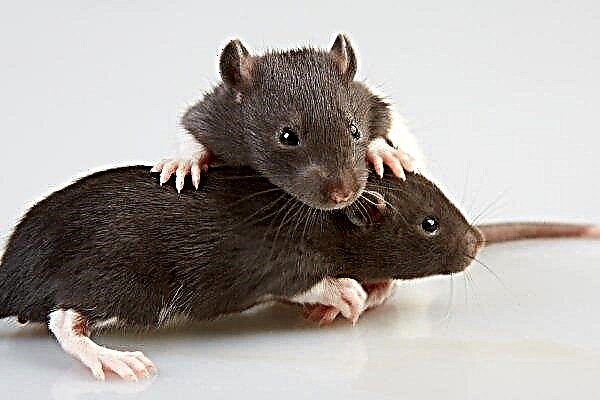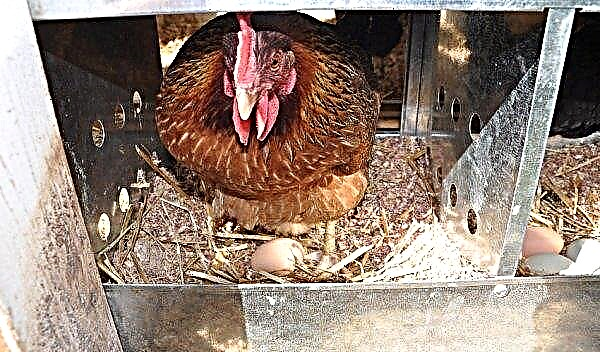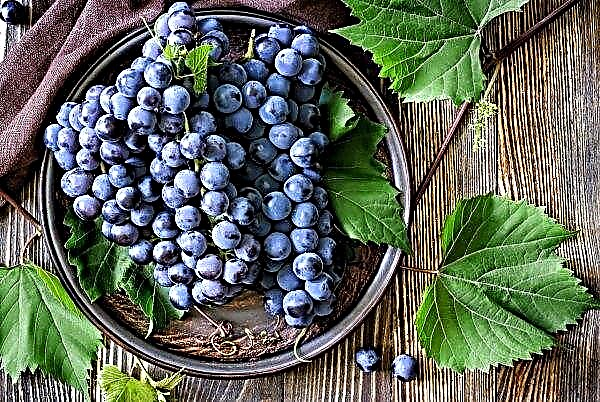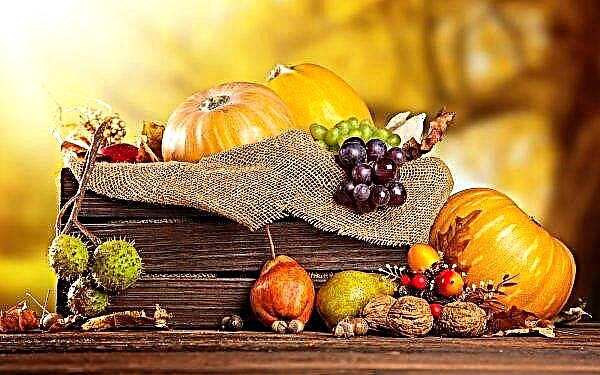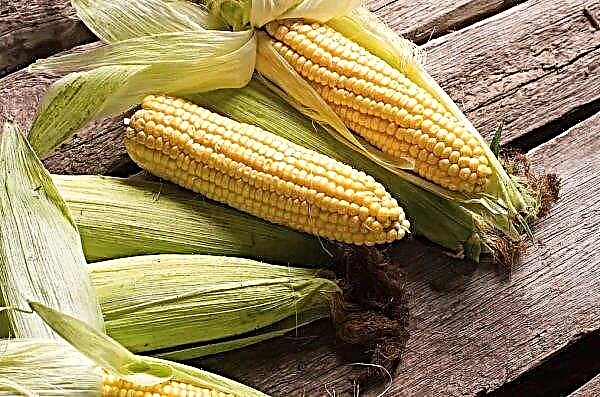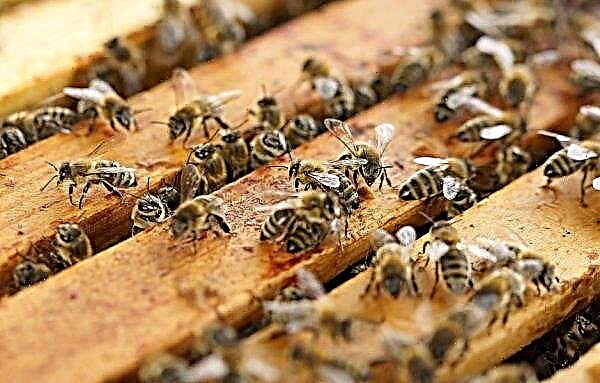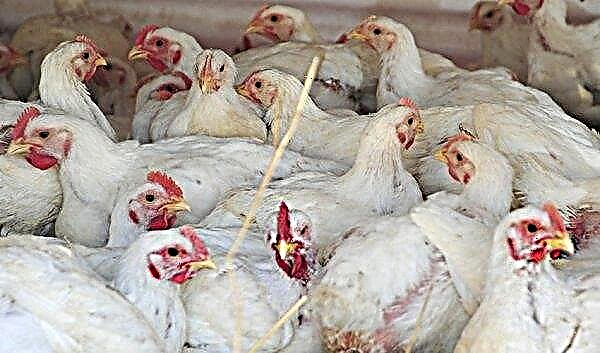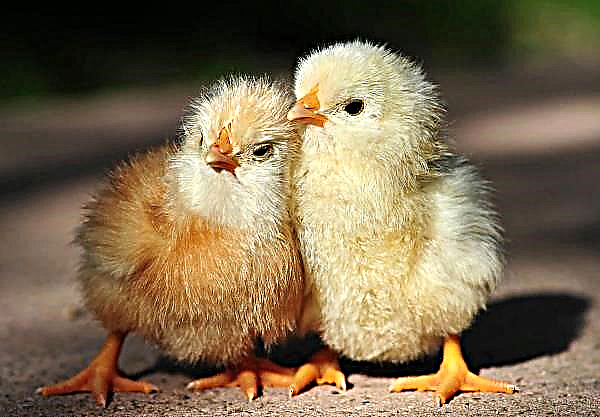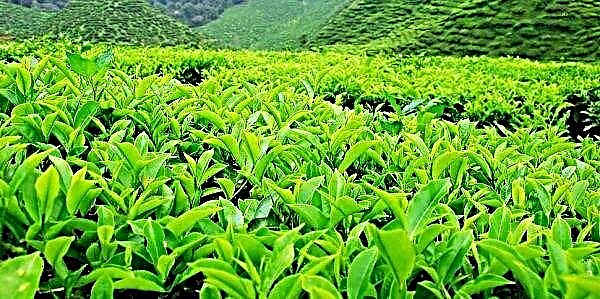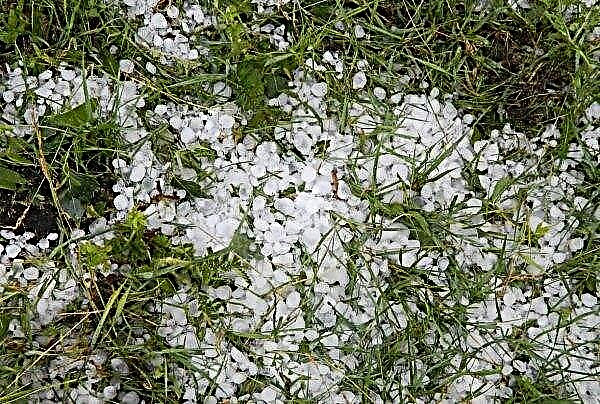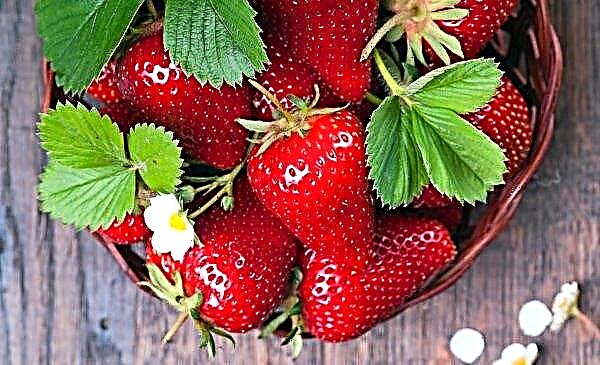There are a great many varieties of pears, however, when choosing them for planting on their plot, the gardener is primarily interested in the optimal combination of such characteristics as taste, yield and unpretentiousness of the tree. In other words, the ideal pear can be called one that does not require a lot of attention and at the same time regularly gives a large number of delicious fruits. In this review, we will talk about a rather new cultivar Silva, which is quite difficult to find by all the criteria mentioned above.
Botanical grade description
Silva was bred in the Republic of Adygea. To breeders of the Maikop experimental station of the All-Russian Research Institute of Plant Production named after N.I. Vavilov managed to get an interesting hybrid by crossing between itself two varieties of pears:
To date, Silva is not included in the State Register of selection achievements allowed for use, and continues to be tested, so there is no official information on the regions of its zoning.
However, guided by the reviews of gardeners who have practical experience in exploring the new product, it should be noted that Silva's winter hardiness is not high enough for cultivation in regions north of Adygea, including the middle part of the European part of Russia, but the variety is great for Kuban and other regions Southern Federal District of the Russian Federation, the Caucasus, Crimea and the whole territory of Ukraine.
Morphology of the tree and root system
A distinctive feature of Silva is the small size of the tree: it does not exceed 3 m in height, and even less on a dwarf stock. The growth rate of the variety is also low.
The shape of the crown is oval, compact (not spreading), thickening and leafyness are quite high. Narrowed leaves, on long stalks. The kidneys are cone-shaped, strongly deflected from the shoot.
Fruit Description
The main advantage of Silva is her fruits. First of all, it is necessary to note their size: these pears are not just large, but literally gigantic.
Did you know? The largest pear in the Guinness Book of Records weighed 1,405 grams and was grown 40 years ago in South Wales (UK). A fruit that ripened in the garden of a farmer from Ingushetia Abas Matiev in 2013 can be considered a Russian record. The weight of this giant was 1007 grams.
With a minimum weight of 200 g and an average weight of 350-400 g, individual specimens can reach 800 g, which is significantly superior to other varieties considered large-fruited. As for the other characteristics of the fruits of Silva, they can be described as follows:
As for the other characteristics of the fruits of Silva, they can be described as follows:
| The form | Wide, "bottle", with pronounced tuberosity |
| Color | Greenish-yellow in the stage of technical ripeness, bronze with weak rustiness - after full maturity. Sometimes there is a blurred pink blush on the side facing the sun |
| Pulp | White or light pink, dense, very juicy, with medium oiliness, graininess and solid fragments are absent |
| Taste | Sweet, with the presence of a musky note, when bitten off, the flesh does not crackle, but melts in the mouth |
| Scent | Pronounced fruity |
| Tasting rating | 5 (highest score) |
Pros and cons of the variety
- Among the advantages due to which Silva fell in love with both professional farmers and ordinary summer residents, it is worth mentioning:
- incredibly high taste characteristics;
- large-fruited;
- compactness and weakness of a tree;
- high stable yield and early stages of fruiting;
- good fruit transportability;
- unpretentiousness;
- winter hardiness (adjusted for growing region);
- good resistance to various fungal infections, in particular, to scab.
Important! Gardeners note that only Delbarya Rx-12/47, also known as Snezka, can compete with Silva in taste characteristics, however, winter hardiness and resistance to diseases of this variety have not yet been studied. As for unpretentiousness and early maturity, in these qualities Silva is second only to the pear variety Striyskaya.
- The disadvantages of Silva are:
- not too attractive appearance of the fruit, in particular, their pronounced tuberosity;
- insufficient winter hardiness for cultivation in the middle lane and in the colder regions of the Russian Federation;
- short shelf life;
- poor resistance to brown spotting, which Silva inherited from the parental form - Triumph de Vienne;
- rarity - it can be quite difficult to find a seedling.

Variety immunity to diseases
Silva's resistance to the main diseases of pears is not absolute, but is characterized as very good, above average. The tree rarely affects the scab, but the variety is much more susceptible to brown spotting.
Pollinators
Silva is a variety characterized by cross-pollination. This means that to set the fruit, it is necessary that not far from the tree (within a radius of no more than 50 m) grow other pears that bloom and bear fruit at the same time - the so-called pollinating varieties.
For Silva this role can play such varieties as:
- Sonata;
- In memory of Yakovlev;
- Autumn Yakovleva;
- Bere Bosk.
Important! The ability of trees to pollinate each other is not always mutual, that is, if one variety is a good pollinator for another, this does not mean that this rule works in the opposite direction.
Silva is an excellent pollinator for pears such as the Favorite of Klappa, Williams and Sonata, so only the last variety can be considered as inter-pollinated with Silva.
Silva bloom is usually observed in early May. The fruits ripen in the second half of September, which allows us to classify the variety as mid-autumn. In the fruiting phase, the seedling enters very quickly, however, the specific timing depends on the stock. So, Silva, grafted on quince, gives the first harvest already 2 years after planting, but even when using another tree as a stock, Silva begins to bear fruit no later than the third year of life.
In the fruiting phase, the seedling enters very quickly, however, the specific timing depends on the stock. So, Silva, grafted on quince, gives the first harvest already 2 years after planting, but even when using another tree as a stock, Silva begins to bear fruit no later than the third year of life.
Landing rules
Despite the fact that the pear is a very popular fruit tree in the Northern Hemisphere, its cultivation has some features, ignorance of which may cost the inexperienced gardener the loss of yield, and sometimes the tree itself. This science begins, of course, with planting.
How to choose and prepare a seedling for planting
Gardeners claim that Silva seedlings have such pronounced signs of varietal affiliation that they can be distinguished even by their appearance: in spring, the angle of deviation of the buds from the branch (it should be significant, almost straight) can serve as a hint, in autumn - the characteristic shape of the leaves, narrowed , on a very long petiole.
However, in reality, one should not be guided by such criteria as the only proof that the seedling is Silva, nevertheless, perhaps, is not worth it.
Important! To buy seedlings is necessary only in specialized nurseries, and you need to look for the right product in advance and immediately agree on a future purchase, since the amount of quality planting material is still very limited.
Since this is a pear with very high taste characteristics, while not yet very common, it is very easy to make a mistake or become a victim of scammers. Another important rule regarding the purchase is that you should avoid buying trees in places that are geographically remote from the place of future planting.
Another important rule regarding the purchase is that you should avoid buying trees in places that are geographically remote from the place of future planting.
Changing climatic conditions, even if both zones are within the same latitude, greatly reduces the survival rate of a seedling, and a pear survives much worse than many other fruit trees.
Silva needs to be planted at the age of 1-2 years. Such a tree has a height of 100 to 120 cm, the thickness in the grafting area is approximately 12 mm. An annual seedling does not have side branches; a two-year-old seedling should have no more than 2, with an average length of 30 cm.
When choosing a tree, it is important to ensure that it does not have damage, the bark must be absolutely monophonic, the branches remain elastic, and the roots bright and fresh. The number of main root processes is at least three, their direction is versatile, the structure is uniform (thickenings are a sign of illness). Another point associated with the selection of a quality seedling is leaves.
Another point associated with the selection of a quality seedling is leaves.
Their very presence, and even more so in large quantities, is undesirable, since a leaf plate evaporates most of the moisture than weakens the viability of a tree extracted from the ground, so conscientious producers remove leaves from their seedlings before selling, leaving only 1-2 pieces that can be identified tree species.
Did you know? Folk healers and herbalists of Plovdiv (the oldest European city located on the territory of modern Bulgaria) believed that a pear could scare away a snake, so when they went to collect medicinal plants, they always took a pear branch with them or previously rubbed pear leaf juice into their skin.
Since the pears are difficult to perceive the transplant, you need to plant the purchased seedling as quickly as possible. Pre-planting preparation includes soaking the roots in a talker prepared from a mixture of 1 part of manure and 2 parts of clay, this will improve root survival. In addition, just before landing, the main boles and side branches should be shortened by 1/3.
In addition, just before landing, the main boles and side branches should be shortened by 1/3.
Some gardeners prune pear roots before planting, believing that in this way they stimulate the rapid development of the root system. This is actually a mistake. A seedling perceives a similar procedure as additional stress preventing its adaptation.
Choosing the best place for landing and preparing holes
The pear makes several fundamental requirements for the place of planting:
- Illumination. You need to find a place on the site where the tree will be in direct sunlight for at least 6 hours a day.
- Wind protection. For an adult tree, this is not so important, but until the seedling is strengthened, winds, especially northern ones, can damage it.
- Low groundwater (minimum depth - 2–2.5 m) and the absence of waterlogging of the soil. The root system of the pear lies quite close to the surface of the earth, and if there is a lot of water in the soil, the roots of the tree begin to rot.
Important! Pears grown in the shade give a more acidic crop, in addition, the size and total number of fruits are also reduced.
As for the soil, here the exactingness of the tree is not so high. Pears grow best on sandstone and chernozem; loam is a good option.
The sandstone is permissible, but Silva alumina is not suitable, therefore, if the soil is heavy and clayey, the situation will need to be corrected by digging a more voluminous pit with a complete replacement of all the earth extracted from it. The optimum acidity is in the range of 5.6–6.0 (a neutral reaction is preferred, a slightly acidic one is allowed, an alkaline pear is not suitable).
The optimum acidity is in the range of 5.6–6.0 (a neutral reaction is preferred, a slightly acidic one is allowed, an alkaline pear is not suitable).
The preparatory phase of Silva’s landing by digging a hole ends. Its standard dimensions are 70 cm in depth and 70–80 cm in diameter. The only condition is that you need to do this in advance, at least 2 weeks in advance, so that soil microflora can accumulate at the bottom.
Landing pattern
Before proceeding directly to planting, it is necessary to make a nutritious soil mixture for the tree. As a basis for this, you can take the land that was excavated by digging a hole, but not all, but only its upper layer, since only it is fertile.
To enrich it and bring the total volume of the substrate to the required amount, you need to add to the ground:
- manure, compost or humus (ideally horse) - 20-30 liters;
- humus - 1 l;
- ammonium nitrate - 80 g;
- phosphorite flour or superphosphate - 1 kg or 1.5 kg, respectively;
- wood ash or potassium sulfate - 800 g or 150 g, respectively.
Important! A pear cannot be buried in the ground. The seedling must be installed in such a way that, after digging in the pit, its root neck (not to be confused with the place of grafting) rises above the ground by no less than 5 cm, and no more than 7 cm.
Having calculated the necessary amount of prepared land that needs to be laid at the bottom of the pit, you can begin to land. First, you should build a hill from the bottom at the bottom and install a seedling on it, carefully spreading the roots. It is advisable to ensure that the vaccination site "looks" to the south.
First, you should build a hill from the bottom at the bottom and install a seedling on it, carefully spreading the roots. It is advisable to ensure that the vaccination site "looks" to the south.
The hole should be buried gradually, periodically pulling the tree up and at the same time tamping the ground to prevent the formation of air chambers in the soil.
After the pit is filled, the seedling must be watered with plenty of warm water and then mulch the surface with peat or sawdust.
In order for the tree to take root better, next year it is necessary to remove the bulk of the flowers from it. (you can leave no more than 20%, but even with them, in case of fruit setting, they should be immediately cut off).
In the second year, the tree is allowed to bloom and set fruits, but half of them are removed when they become the size of a cherry.
Such rationing will not only increase the size and sugar content of the remaining fruits, but also make it possible for the seedling to survive the winter, because fruiting takes away the lion's share of energy and nutrients from the tree, about 15 times more than the growth of shoots and leaves. Guided by this consideration, it is necessary to remove part of the pears from the tree in subsequent years, until it grows stronger.
Features of seasonal care
Seasonal pear care includes watering, top dressing, pruning and preventative treatment. Each of these types of work has its own deadlines and rules.
Watering
The main rule regarding watering fruit trees is that these procedures should be rare but plentiful. A clear periodicity cannot be established here, it all depends on climatic and weather conditions.
A clear periodicity cannot be established here, it all depends on climatic and weather conditions.
However, it must be remembered that:
- the pear does not tolerate an excess of moisture in the soil;
- with insufficient watering, you can lose a significant part of the crop, and not only in the current, but also in the next year.
Important! A critical need for moisture for Silva occurs in July and August, when intensive fruit formation and budding of buds occur next spring. But from the second half of August and until the harvest is harvested, watering must be stopped, otherwise the pears grow less sweet and are worse stored.
For watering, you always need to use water slightly warmed up in the sun, and the procedure itself should be carried out in the evening or in the morning.
Rules for trimming and forming crowns
Pruning is a very important agricultural technique when gardening. It allows not only to extend the life of the tree, but also significantly increase its yield and even improve the taste of the fruits, their quantity and size. A properly trimmed tree is less sick, in addition, it is much easier to process.
After the first pruning, which is carried out at the time of planting, a crown should be formed over several years. For this, the rarefied-tier method is usually used, assuming the presence on the trunk of “belts” of 2–3 branches directed in opposite directions with a distance between tiers of 50–70 cm. In parallel, sanitary pruning is carried out, consisting in the removal of duplicate, intersecting, damaged and dried branches, as well as vertically directed knots.
In parallel, sanitary pruning is carried out, consisting in the removal of duplicate, intersecting, damaged and dried branches, as well as vertically directed knots.
Pears do not tolerate autumn pruning, so it is best to carry out the procedure in the spring, until the buds open, choosing a dry and sunny day.
When cutting pears, you must be guided by the following rules:
- The radicality of pruning pears, compared with the apple tree, should be higher.
- Removing branches should be done “under the root” without leaving stumps.
- The fruiting branches of an adult tree, unable to withstand the heaviness of large fruits and because of this falling to the ground during fruiting, it is better to remove, thus giving the stimulus for the formation of young shoots a little higher.
- The pear is very sensitive to shading of the crown, so over time it needs to be thinned out. This will not only increase productivity, but also increase the resistance of the tree to diseases and pests.
- Even with intensive anti-aging pruning, the total weight of the branches cannot be reduced by more than 25%, otherwise the pear will recover for a very long time after such a procedure.
Fertilizers and application rates
Topping the pear, as well as watering it, must be done correctly and dosed. In the spring, nitrogen fertilizers are always applied, in the fall - phosphate and potash. Organics (compost, manure, humus) is brought in at any time of the year, but it is better to do this in spring or autumn, at the same time as digging the earth around the pear. The frequency of such top dressing can be 2-3 years, depending on the condition of the tree and the initial quality of the soil (on chernozem, the frequency of fertilizing can be reduced, but on sandy soil, on the contrary, increased).
The frequency of such top dressing can be 2-3 years, depending on the condition of the tree and the initial quality of the soil (on chernozem, the frequency of fertilizing can be reduced, but on sandy soil, on the contrary, increased).
The dosage when applying fertilizers is calculated from the area of the root system, and it, in turn, is determined not only by the age of the pear, but also by the stock on which it is grafted.
Important! Silva's root system, grafted onto a dwarf stock (usually quince), spans 12–15 m in an adult tree², while a strong-growing stock can increase this area to 20–25 m².
The consumption rates of mineral fertilizers per 1 m² of the root system are given in the table:
| Type of fertilizer | Dosage, g |
| Nitroammofoska | 70–80 |
| Ammophos | 70–80 |
| Wood ash | 700 |
| Potassium chloride | 15–20 |
| Potassium sulfate | 20–25 |
| Phosphorite flour | 30–40 |
| Superphosphate | 40–60 |
| Urea (urea) | 10–20 |
| Ammonium nitrate | 15–20 |
Winter preparations
Silva's winter hardiness fully allows the tree to endure frosts without problems up to -30ºC, which is quite enough for warm Adygea and other southern regions. However, we are talking about an adult pear. It is advisable to insulate young seedlings at the end of autumn. For this, the near-stem circle should be mulched with a thick layer of peat, manure or sawdust, and the stem itself should be wrapped with light and “breathing” material. For this purpose, you can use burlap, agricultural fiber and even nylon women's tights.
For this, the near-stem circle should be mulched with a thick layer of peat, manure or sawdust, and the stem itself should be wrapped with light and “breathing” material. For this purpose, you can use burlap, agricultural fiber and even nylon women's tights.
When snow falls, you can form a high snowdrift around the tree, but before the start of spring it is better to remove it, since the abundance of melt water can be detrimental to the delicate root system of the seedling.
Did you know? In order to defeat the "black death" (as the plague erupted in different parts of Europe, Asia and Africa every 10-15 years) in the Middle Ages, some peoples performed ritual rites of exile, making a plague sacrifice that was hung on the oldest pear.
Obligatory part of winter work in the garden is also the removal of all plant debris from the ground in the area where the fruit tree grows, since pests and fungi that specialize in this crop prefer to winter nearby, hiding in fallen leaves, dried weeds, and especially in the remaining unharvested fruits.
Grade Diseases and Pests
Silva shows good resistance to scab and some other fungal infections, but experienced gardeners are well aware that even very strong trees can suffer significant losses from diseases or pests if timely preventive treatment of the garden is not carried out. In particular, on a pear can parasitize:
In particular, on a pear can parasitize:
| Disease | Pests (insects and ticks) |
| fruit rot (moniliosis) | pear beetle |
| scab | pear moth |
| soot fungus | pear gall midge |
| comb | pear tinnitus (leaf flint) |
| powdery mildew | ringed silkworm |
| rust | apple spotted scale |
| infectious drying of the cortex (cytosporosis) | fruit fly |
| branch drying (tuberculosis) | fruit beech |
| black cancer | gall mite |
| european cancer | cherry sawfly |
| brown spotting (entomosporiosis) | brown fruit tick |
| leaf spot (phylostictosis) | green apple and gray aphids |
It is most expedient to process a tree in the spring, and it needs to be done very early, while the active sap flow has not yet begun, and stretch into several stages:
- During the first treatment the main emphasis is on protection against fungal diseases, since insects are still sleeping at this time, and fungal spores are already spreading through the air. As a suitable preparation at this stage, copper sulfate or Bordeaux mixture can be considered.
- Second treatment carried out in the phase of the "green cone", t. at the time of the onset of kidney swelling. It is important not to miss the moment, because insects such as apple or pear flower beetles wake up from hibernation very early and soon begin to lay their eggs. When this happens, the treatments will lose their effectiveness: the first generation of harmful beetles will soon die anyway, and the eggs and larvae that appear after a while hide in a closed flower bud, so any insecticide is powerless against them. Until the imago gets out, the flower will be completely destroyed. Urea or nitrofen have a good insecticidal effect, which, in addition, are also nitrogen fertilizer necessary for a tree in spring.
- Third treatment carried out immediately before flowering to destroy those pests that wake up later. Sometimes another spraying is performed, immediately after the tree has bloomed.
Harvesting and storage
Silva, as has been said, belongs to the mid-autumn varieties, which characterizes not only the ripening time of the fruit, but also their keeping quality.
Important! For long-term storage, only the so-called winter pear varieties are suitable, which ripen in mid-autumn. Almost no summer varieties are stored, they should be eaten or processed no later than within two weeks after harvest.
Autumn Silva is between the two indicated varieties. Ripening in late September, its fruits can be stored in the refrigerator or cellar for 1-2 months. The optimum temperature for storage is + 2 ... + 5ºC. Moreover, if you collect a little earlier, when the pears have not yet reached full biological ripeness, the above period will be close to the maximum mark.
Moreover, if you collect a little earlier, when the pears have not yet reached full biological ripeness, the above period will be close to the maximum mark.
However, before sending such fruits to a cool place, they must be kept for several days at room temperature, during which time they will reach full “readiness” and will be in no way inferior in quality to those that ripened on the tree.
Silva is a young and not very well-known pear variety, but despite the lack of official recognition, he has already managed to win a huge number of fans among gardeners in the southern regions of Russia and its immediate neighbors.
The taste of Silva fruits today is difficult to find equal, and impressive yield indicators with very compact tree sizes make the variety a real find for owners of small summer cottages.

